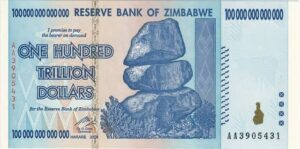Why these 5 countries gave up their own currencies
In a world where national pride and economic autonomy often hinge on currency, some countries have made the bold move to abandon their own monetary systems in favour of foreign ones. This shift, driven by economic crises, hyperinflation, or aspirations for stability, shows just how complex and vital currency management can be. Here’s a look at five nations that turned to foreign currencies and what they’ve gained—and sacrificed—in the process.
1. Ecuador: Escaping Crisis with the US Dollar

In 2000, facing spiralling inflation and a major financial crisis, Ecuador replaced its native Sucre with the US Dollar. This bold move quickly brought stability and restored investor confidence. Today, Ecuadoreans pay for everything from groceries to rent in US Dollars. While this change has helped keep inflation under control, Ecuador lost the power to print money and create monetary policies, making it vulnerable to external economic shifts.
2. Zimbabwe: Taming Hyperinflation

Zimbabwe experienced one of the worst cases of hyperinflation in history, with prices doubling by the hour in 2008. At its peak, the Zimbabwean Dollar was practically worthless. Desperate for relief, the government abandoned it in 2009, adopting the US Dollar, South African Rand, and other currencies. This stabilised prices, but left Zimbabwe dependent on other nations’ economic conditions. Despite attempts to reintroduce a local currency, US Dollars still dominate everyday transactions.
3. Panama: A Century of Dollarisation

Panama has used the US Dollar since 1904, alongside its own coin-based Balboa currency, which is pegged to the Dollar. This dual-currency system has made trade seamless and attracted investment from the US, but Panama cannot adjust its monetary policy independently. While beneficial for economic consistency, Panama’s reliance on the US Dollar limits its ability to respond to local financial needs.
READ ALSO:Naira drops to become the third worst performing currency in the world
4. Kosovo: Building Stability with the Euro
Emerging from war and unrest, Kosovo declared independence from Serbia in 2008. In a move to stabilise its economy, Kosovo adopted the Euro despite not being an EU member. The Euro brought low inflation and facilitated trade with European partners. However, without a seat at the EU’s monetary policy table, Kosovo cannot influence the value of the currency it relies on—a challenge that can strain the nation during economic downturns.
5. East Timor: Rebuilding with the US Dollar

After gaining independence from Indonesia in 2002, East Timor chose to use the US Dollar to foster economic stability and encourage foreign trade. While this decision brought much-needed peace of mind in a nation recovering from conflict, it came at the cost of control over its monetary policy. East Timor remains dependent on decisions made by the US Federal Reserve, limiting its financial autonomy.
Why Abandoning a National Currency Can Make Sense
For these countries, adopting a foreign currency wasn’t just an economic choice—it was a lifeline. From fighting inflation to building a stable future after conflict, these decisions were about more than just banknotes. While such moves offer stability and open doors to global markets, they also come with sacrifices, as these nations give up control over vital economic tools. It’s a reminder of the difficult balancing act some nations face when survival outweighs sovereignty in the world of finance.
Written by Sakinat Musa Abubakar, Editor at Neptune Prime
Follow the Neptune Prime channel on WhatsApp:
Do you have breaking news, interview request, opinion, suggestion, or want your event covered? Email us at neptuneprime2233@gmail.com





